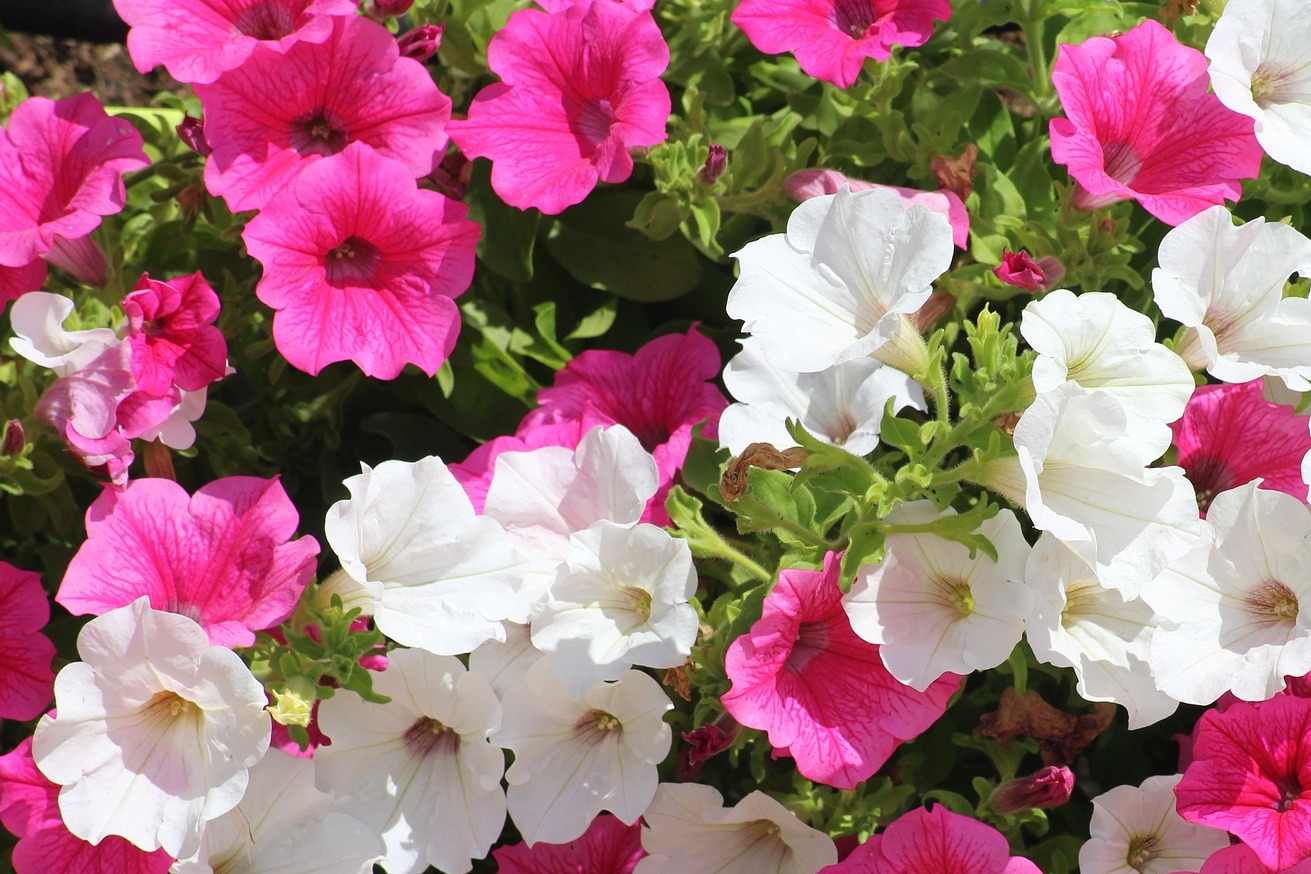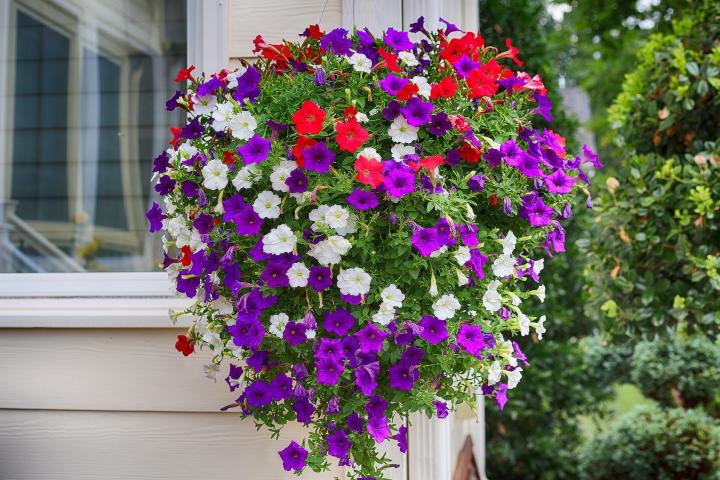
Sign up for our daily newsletter to get gardening tips and advice.
Planting, Growing, and Caring for Petunias
ADVERTISEMENT
I’m in my 70 and never had seaside petunias before. So thanks for the advice on how to grow and water them in a pot.
We are so happy to hear that our Petunia Growing Guide was useful! Hopefully, you have gorgeous petunias this summer.
Earlier this season I found a beautiful Black Petunia and it was just gorgeous! It bloomed and did well for a few weeks and then it just drooped and seems to be dying. I would love to know if there is some way I could revive it.
Your black petunia sounds like it had a great start to the season. Drooping and/or wilting can happen for a variety of reasons, most often with either too much or too little water.
Petunias are rather drought and heat tolerant, and do best with a thorough watering once a week. The key is for good drainage because excessive water in the soil can cause the roots to be affected. They prefer slightly moist soil to dry soil, so check your soil to see where things stand before adding more moisture.
If your plant does not perk up when watered, stop watering it and allow the soil to dry thoroughly. Petunias also benefit from a dose of balanced fertilizer monthly.
Drooping can also be due to a lack of sun, as they prefer full sun, or a sign of insect or fungal issue.
I was so relieved to come across Alicia's comment regarding withering petunias. She has described exactly what has happened with my petunias this year!! Exactly!! I have not been able to determine the cause of this problem either. Could there have something in the potting soil used at the greenhouse? I would really like to know the cause so as not to duplicate the problem next year. Nearby flowers don't seem to be negatively affected.
I have successfully grown petunias for many years. I put them in pots on my front steps as well as in the flower beds on either side of the steps, all in full sun. Last year however, they failed miserably. I planted around 60 plants from six-packs over a 3-4 week period. Some died within a week of planting, some after a couple weeks, some after several weeks or even two months. All went through the same stages: one day the plant would look vigorous and healthy; but the next day, the leaves would look wilty - the same look as when water is needed, but water was not needed as the ground was adequately moist; the third day the plant would be withered completely. One by one, the petunias went through these stages until I had only one that made it through most of the summer. This summer, after 4 weeks in the ground, the same thing is happening. I am losing plants daily. I can find no evidence of pests nor of gophers (though gophers would not be able to bother the potted plants). I have kept the soil moist but not wet. I thought that perhaps there was something wrong with my soil, but the petunias in pots with potting soil were/are dying just the same way as those in the soil. I'm completely baffled. As I said, I have successfully grown petunias for many years. I will appreciate any insight given. Thank you.
Hello, I had gorgeous “Galaxy Petunias” that were mainly purple in color with speckles of white. This last bloom all the flowers came out fully white with the only purple being in the bottom of the buds (closest to stem). Can anyone tell me why this happened and what I can do to get my flowers back to their prior glory? Thank you in advance.
Color changes in flowering plants is something of a mystery. It could be from limited chlorophyll or another component of photosynthesis. Some sources also suggest that temperature plays a role.
If anyone has other explanations we’d love to hear them!
I've just moved from 6b planting zone to 9a. I've had 6 large planter pots across my back deck in full sun with petunias at both of my homes. In the 6b zone I would plant them from 4-6 inch pots or flats on June 15th (never before) after, hopefully, the last snow. They would bloom beautifully all summer long with minimal care needed; a little dead-heading, a couple miracle-grow shots. The pots would fill abundantly with lovely multi-colored flowers hanging all the way to the ground by mid July. Stunning! Bloom would usually be done by mid to end of September with the first cold bite. My new home this year in 9a. It's been a continual fight of aphids all summer long every 2-3 weeks with soapy water, store-bought remedies...I've tried everything. After each treatment, the plants lost their blooms and would look bare for a week or two, then abundant blooms would appear again (with aphids). It was cyclical. It's Nov 20th in 9a zone. We've had several frosts and the flowers and leaves still look good. I've read petunias may be perennial in this zone. We'll see. If they do, I may keep them, otherwise, any ideas on another full sun flower that doesn't have the pest problem?
I found Dr. Doom took care of the aphids. Works great on the ant problem as well. Hope this helps.











